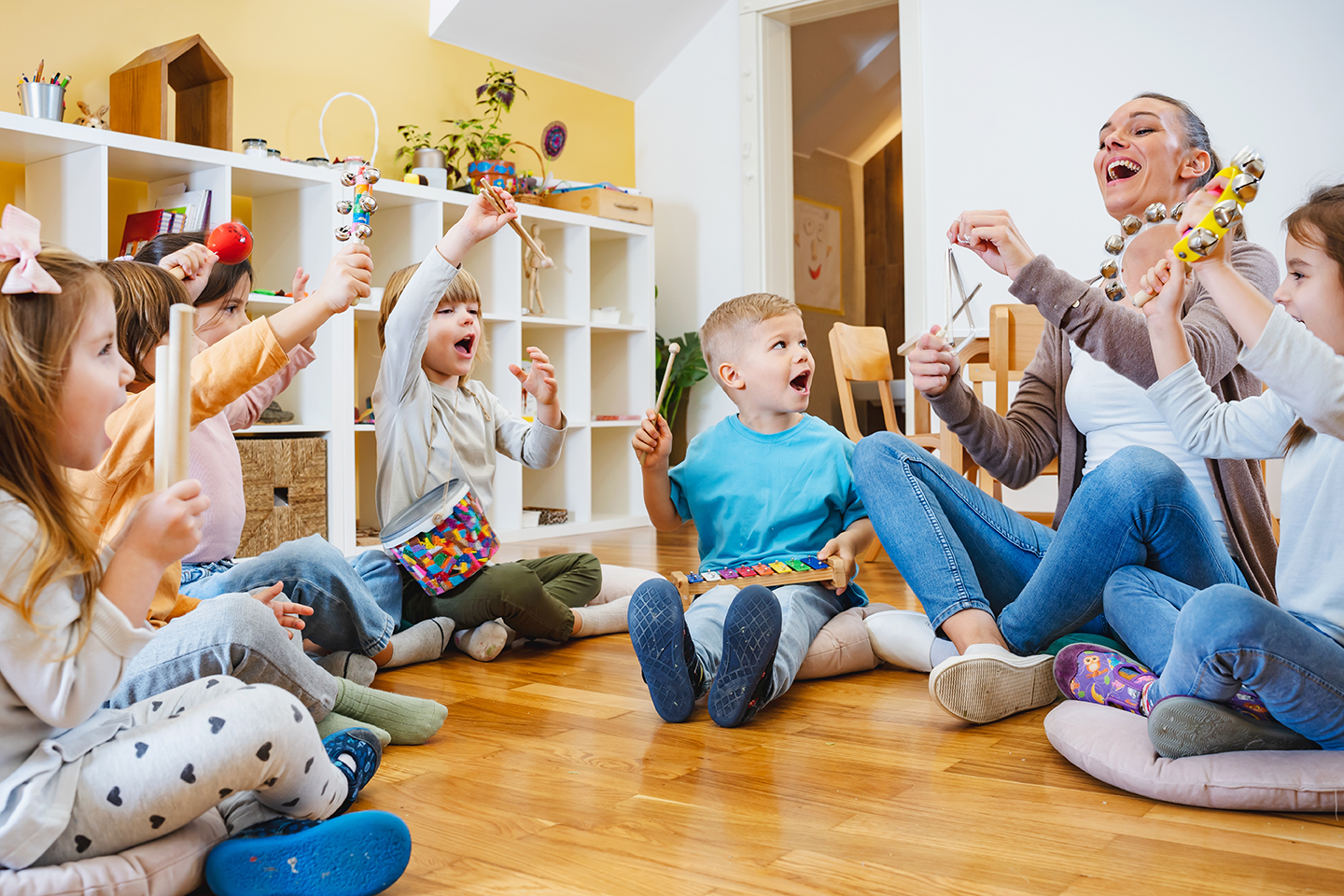By Madison Gwizdalski MS-CCC, SLP
Have you ever noticed that your child’s eyes light up when they hear their favorite song? Or witnessed them jump up and down from excitement when they recognize the beginning beats of “Baby Shark”? What about the calming effects that certain lullabies will have on soothing your fussy baby? We know that music has a profound impact on humans – it can evoke memories, trigger emotions, and even offers us the feeling of predictability…. So how can we use this to help our children learn language?
Studies have shown that musical experiences in childhood can accelerate brain development, particularly in areas of the brain that are responsible for language acquisition and reading skills. Music also encourages children’s social-emotional development, and motor skills (i.e. by dancing and participating in finger-plays), and helps them develop strong memory skills. Music encourages children to retain words and expressions effectively due in part to the rhythm and consistent patterns within songs. As adults, we understand that learning takes time and repetition. By hearing, practicing, and singing songs (sometimes over and over again!) children are given ample time and structure to link meaning to the words they are singing!\
Here are some tips on how to incorporate more music into your baby’s life:
- Sing early and sing often! – Studies have shown that infants prefer a mother’s singing to speech, and display greater alertness, happiness, or calm depending on the type of song. It’s why speech therapists recommend using “parentese” when talking with an infant – this speech style will capture your baby’s attention by using a higher pitch, more repetition, and a sing-song rhythm and intonation.
- Play your favorite music to your baby – playing music that you like and will sing along to will create engaging and exciting social experiences between you and your baby.
- Incorporate homemade instruments – you can use pots, pans, spoons, and containers to create your own symphony. Fill plastic containers with dried beans, pasta, or rice to make a variety of sounds. Children love to see what noises they can create!
- Link movement to music – find songs that include gross motor (i.e., big body movements) and fine motor movements (i.e., smaller movements). Finger-plays such as the “itsy bitsy spider” can target coordinator, and memory, and help with understanding the concepts in the song!
- Use music in different routines – singing songs during everyday activities (e.g., bath-time, diaper changes, clean-up), can help your baby learn the expectations of those routines, making them easier to complete!
- Go to a music class – Making music with others offers the opportunity for your child to practice collaborating, sharing, and communicating with their peers while playing music!




